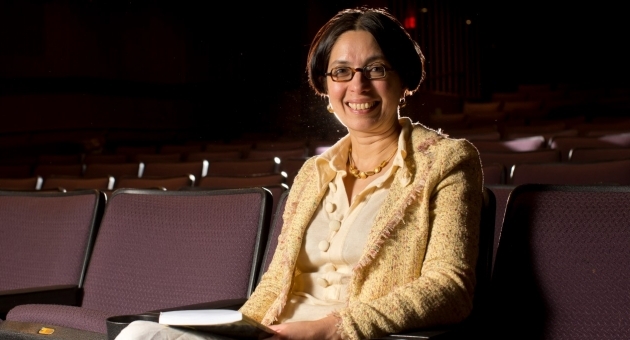
With their epic stories and infectious song-and-dance routines, Bollywood movies can seem like the ultimate form of escapism. But behind their multicolor gloss is a potent subtext about modern India’s thorniest subjects, writes Temple’s Priya Joshi.
In Bollywood’s India: A Public Fantasy (Columbia University Press, 2015), Joshi, an associate professor of English in the College of Liberal Arts, says Bollywood―the Hindi-language film industry based in Mumbai―has provided an ongoing conversation about India since the country gained independence from the British in 1947.
Bollywood films have given voice and shape to the average Indian’s dreams, fears and anxieties from the turbulence that followed India’s partition from Pakistan through the explosive economic growth of recent years, says Joshi.
“The blockbusters of Hindi cinema have played a prominent role in managing the euphoria and crises that confront the modern nation” of India, Joshi writes. In the book, Joshi “analyzes the social work that popular cinema has done for the nation even as the cinema has challenged fundamental practices of the nation and the state during critical moments.”
According to Joshi, almost all Bollywood movies follow a familiar formula: There are usually half a dozen songs, a love story, stylized action sequences and big dance numbers. The wide-ranging appeal of this formula helps to fill India’s massive theaters, which can seat a thousand moviegoers or more.
Despite Bollywood’s populist elements, Joshi says the films have given Indians a chance to talk about subjects they couldn’t otherwise discuss, either because of cultural taboos or political repression.
She points to the 1973 film Bobby, which was a megahit at the box office and featured stars Rishi Kapoor and Dimple Kapadia. The film extolled the pleasures of teenage love but below the surface, it dealt with “dowry deaths,” the murder of brides in an attempt to extort their parents.
Another example is the 1951 movie Awara, which paid homage to the comedy of Charlie Chaplin but also shined a light on India’s bloody partition from Pakistan.
“Bollywood films deal directly with some of the most challenging aspects of Indian life,” said Joshi. “Whether it’s terrorism, class tensions or political corruption, Bollywood has been there to help Indians understand who they are and what they want to become.”